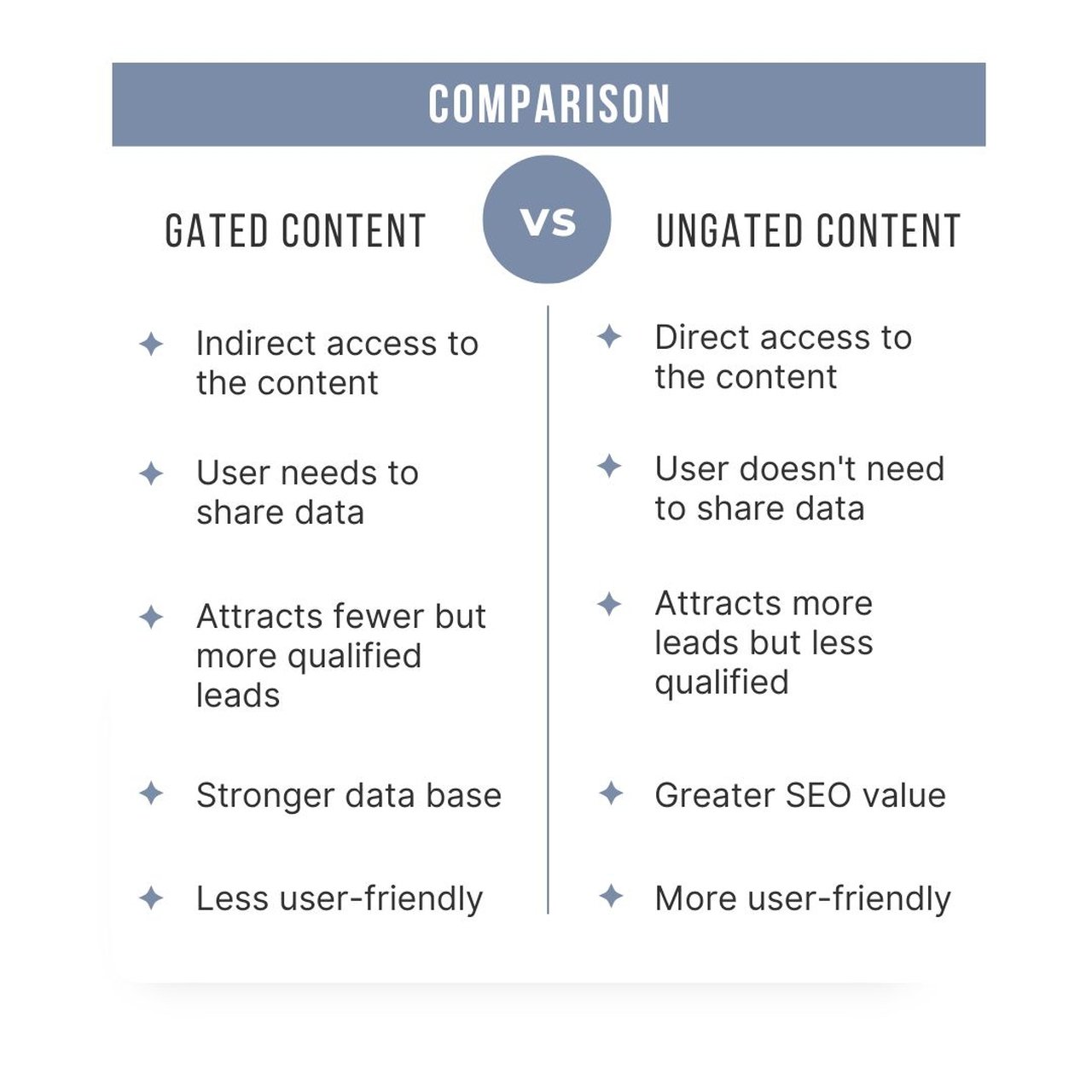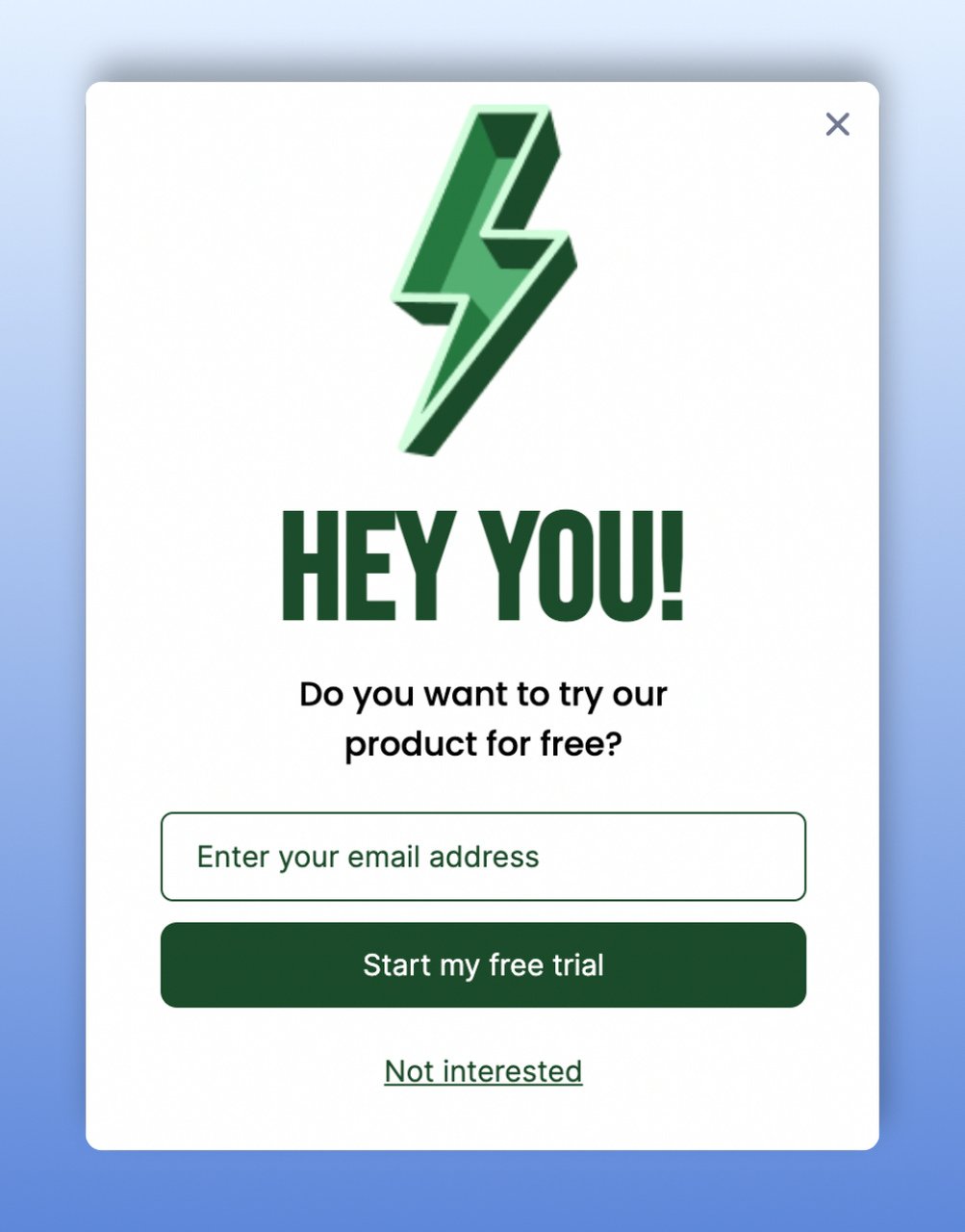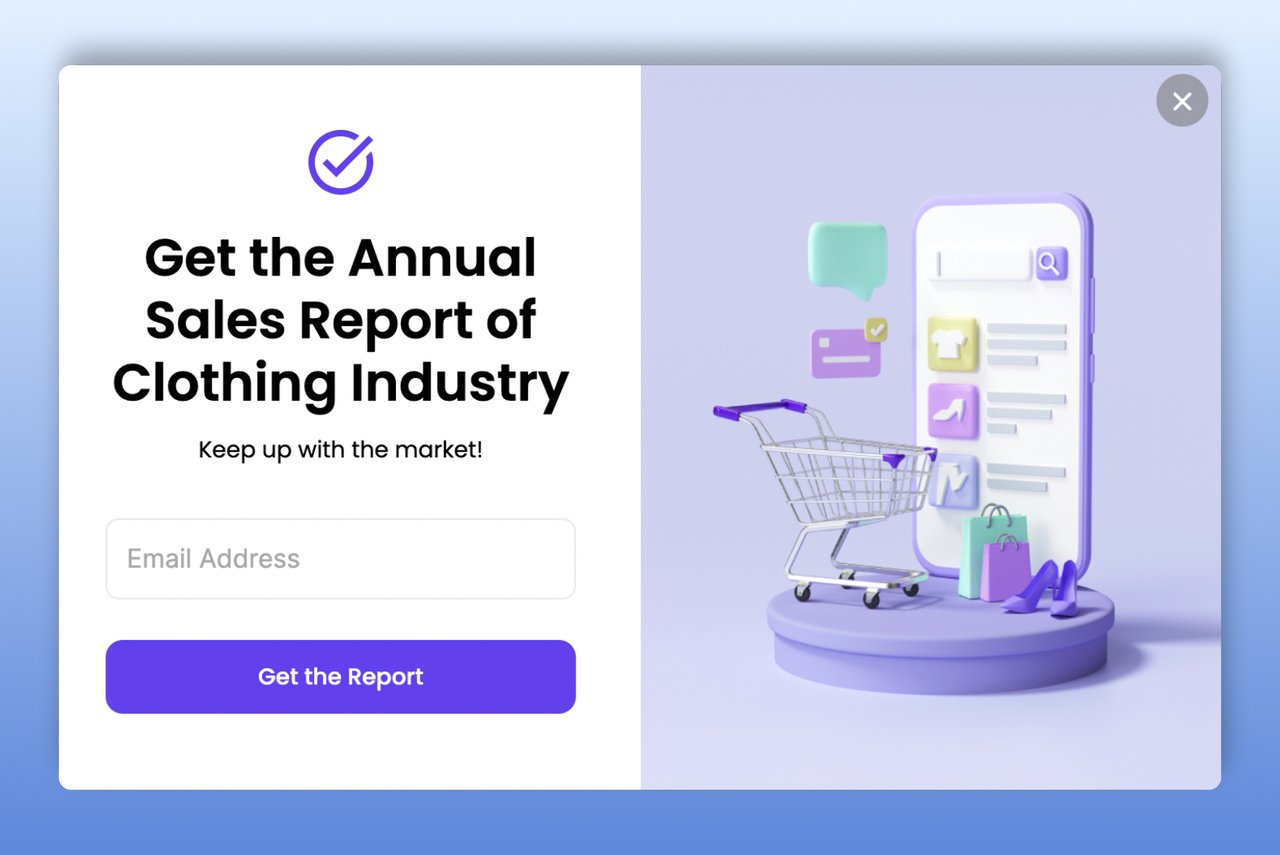What is Gated Content?
Gated content is a form of online marketing that is used by marketers to build trust with their audience. It's mainly a way to collect email addresses, but it's also a way to create valuable content for your audience.
It can be in the form of an ebook or a webinar. It can be an interview with someone from your company with expertise in that area.
The goal is to create something compelling for your audience and give them some sort of incentive to share their information with you in exchange for it.

The objective of gated content is to collect leads and build relationships with potential customers in exchange for valuable, timely information.
This content strategy will help you build trust with your target market while creating awareness around your brand or product line.
You can use gated content as part of an email marketing campaign or as part of an inbound marketing strategy. In addition, this strategy works well when incorporated into a paid advertising campaign because it allows you to build trust before asking someone to make a purchase decision.
Pros and Cons of Gated Content
It's true that when used correctly, gated content helps you achieve your marketing goals within a snap of your fingers.
But you should be aware of the cons before you dive into this strategy. Let's see gated content's pros and cons to ensure you are on the right track.
PROS:
- Creating gated content doesn't cost much with the right content marketing strategy. So it can be said that your return on investment will be high.
- Gated content helps you generate high-quality leads, as people who share information with you willingly are most likely interested in your work.
- As a result of generating leads, your email list will get longer. So you can segment your email lists to send super-targeted emails.
- You will increase sales with the proper targeting thanks to your quality leads.
- People who share information with you show that they trust you in the first place. So it is a great way to understand visitors' perceptions and strengthen your authority.
- Gated content is an excellent way to understand what type of content people want by analyzing your results and seeing what content generates the most leads.
CONS:
- As gated content is some kind of a block between the visitor and the content, fewer people may actually see it.
- Gating your content can also cause low page views and traffic.
- As a result of low traffic, your best content may not be seen by your seriously interested leads.
- On the SEO side, there's not much that gated content does. So if you rely on your gated content to drive traffic to your website, you are on the wrong track.
- The fact that they need to share info before getting what they really want just irritates the users.
- Some users may submit incorrect information, and incorrect information may cause you to waste your time and effort for nothing.
What is the Right Time to Gate My Content?
The timing of your gated content is crucial, as the wrong time could blow your efforts sky-high. There are multiple things to pay attention to in this matter.
For instance, when the buyer has come a long way in their journey with your brand, they will be more likely to share information with you without hesitation. So later in the buyer's journey is a good time for gated content.
Also, you can if your content is driving high traffic, you can take advantage of it by gating it. Similarly, if you have exclusive content that people may not easily find elsewhere, it might be a great opportunity for gated content.
Before asking for the visitor's data, you should check your content's quality, format, objectivity, and usefulness. Otherwise, expecting them to share their information will not be fair.
Gated Content vs. Ungated Content
It is inevitable to mention ungated content while we are discussing gated content. That's why here we present a quick comparison between gated content and ungated content.

Gated content is a type of content that requires users to complete an action before they can access the information. This is by far the most obvious difference between gated and ungated content.
Another thing is, as one might conclude, gated content and ungated content both serve different purposes.
Gated content is used for a leading generation, while ungated content mainly serves for SEO improvement and increasing brand awareness.
The type of both contents is also different. Blog posts, infographics, or videos could be classified as ungated content, whereas gated content includes ebooks or webinars, etc.
Types of Gated Content
1. Free Trials
The most common gated content might be a free trial offer. A free trial offer is when people can try out your product for a limited amount of time and if they like it, then buy it.
This is very effective because it allows you to prove to them that the product will work for them before they have to pay anything.
It's important that you make sure that you're using this type of content correctly, though.

If you don't give people enough value upfront, then they'll never buy from you again because they won't feel like it was worth their time or money.
The idea behind gated content is that it should be valuable enough for people to want to pay for it later on down the line so that they can continue getting more value from it after their free trial expires.
2. White Papers
White papers are a great tool for communicating information concisely. They can be used to educate, entertain and persuade your target audience.
The main purpose of white papers is to provide information on a particular topic. The author uses the paper to explain something in detail, such as how a product works, what it's made of, or why it's better than other products of its kind.

White papers should be informative, but they can also be used to persuade people to buy a product or service by showcasing its benefits.
White papers are usually written by experts who have extensive knowledge about the topic at hand and can write about it with authority.
The goal is for readers to feel like they're getting an expert opinion straight from someone who knows what they're talking about; this makes them more likely to believe what's being said and act on any recommendations given in the paper.
3. Ebooks
Many authors are using digital books as a way to gate content.
For example, you can give away the first part of your book for free, then ask for an email address in exchange for the rest. This allows you to build a list of potential customers and profit from selling future books or other products.

Here are some tips for creating ebook gated content:
- Ensure your book is worth reading before asking people to sign up for it. Otherwise, they'll feel cheated and not open their wallets later on.
- Give them something else in return besides just the book itself — like access to a private forum where they can get answers to their questions without bothering you directly (or other authors).
- Include links to other resources that will help them learn more about your book's topic — whether it's webinars, videos, or articles by other experts in your field.
4. Webinars
Webinars work perfectly as gated content. With a webinar, you can educate your audience on a topic and then ask them to register.
The registration process is a simple form that asks for their email address and allows them to opt into your list. Once they register, they are now part of your email list, which means they'll receive future offers from you.
The key benefit of using webinars as gated content is that it helps build trust with your audience by giving them something of value before asking them to opt-in.
You can also build excitement about the event with pre-registration announcements and reminders leading up to the event itself.
5. Product Demos
A product demo is a great way to build your list. You'll have access to a large group of potential customers, and they can view the demo as many times as necessary to make a decision.
Product demos are often gated — they're only accessible after the visitor provides their email address. This makes them more effective than other types of content at getting visitors to sign up for your list.

When someone submits their email address, they're making an active choice to receive future emails from you. So you can be sure that they have some level of interest in what you have to offer.
6. Courses
If you've been in the e-learning industry for a while, you may have come across gated content.
It's essentially a way to restrict access to certain parts of your course until the learner has completed another section or restrict the entire content until the person enters their information.
The most common example is an assessment, where the learner must answer a series of questions correctly before progressing to the next section of the course.
But there are many other ways you could use gated content, including
- hiding or revealing certain parts of your course (e.g., "See what other students are saying" or "Download free resources") in return for the desired action.
- showing different versions of the same course based on various demographics (e.g., younger learners vs. older learners)
7. Quizzes
If you're trying to attract new customers, quizzes can help them decide if you're the right fit for their needs. You can ask a series of questions about their needs to ensure that you will offer the best products that suit them.
But in order to find the best fit, they will need to enter their information.

The information you get will also help you learn more about your customers so that you can create better products and services for them in the future.
Quizzes are also a great way to engage with your existing customers and give them a reason to keep coming back.
For example, if you have an online store, you could create a quiz that helps your customers find the perfect clothing style for them. This, for sure, will make them engage in your store even more.
8. Private Communities
One of the best examples of gated content is a private community. A private community is an exclusive group of people who share common interests and goals.
These groups are often made up of customers and prospects, but they can also be made up of employees, family members, or even just people who want to connect with you on social media.

A private community is created by providing value in exchange for an email address or other information.
Once someone enters their email address, they have access to exclusive content such as articles and other media shared in the community.
Private communities are great because they don't feel like advertisements; instead, they feel like personal interactions between you and your audience members.
And because there's no cost associated with joining these communities — other than giving up your email address — many people will join them simply out of curiosity about what you have to say or offer.
9. Annual Reports
Annual reports are a great way to build relationships with your customers and prospects. They can also be a great source of gated content for your website.
They are an easy way to create compelling content that will help you build your brand and drive more traffic to your site.
If you want to use your annual report as gated content, make sure to have a clear call to action. Don't make people click through multiple pages before you get to the content that matters.

Make sure the language is clear and direct. Use numbers and statistics in your copy if possible.
It helps people understand what they're getting into and makes them feel like they're making an informed decision about whether or not they want to read more (and, in many cases, pay for it).
10. Email Series
Email series is a great way to build relationships with your customers, as well as generate leads and increase sales.
The best way to do this is by creating a gated email series, meaning that the reader has to opt-in to receive it.

If you want to use your email list as gated content, here are some of the most popular ways:
- Send out an initial email with a link to a landing page where they can sign up to receive future emails.
- Include a call-to-action at the end of each email that encourages subscribers to sign up for more content.
- Encourage subscribers who have already signed up for one piece of content to share their contact information in exchange for being sent another piece of content.
For example "If you're interested in learning more about how we help people improve their health and fitness, please click here and enter your email address below so we can send you our latest blog post on this topic!"
11. Video Content
Video content is the most popular form of gated content. And with good reason — it's an effective way to share information and educate your audience.
Video is a visual medium, so if you're trying to explain something, a video can often be more effective than text alone.
But how do you use video as gated content? The first step is figuring out what kind of video content you want to create and what purpose it will serve.
If you're creating video content as part of a sales funnel or marketing campaign, start by coming up with an idea for a script that would be useful for your audience.
Then make sure you have enough time to produce the video before launching it.
This way, you can build an audience that wants to see your videos and your email list before you know it!
Before You Leave…
There are dozens of reasons why you might have to create gated content or have to deal with one.
So yes, it's very important to make sure that you're dealing with gated content correctly.
In general, we can say that the best approach is to understand your audience and their needs first before deciding how to handle this kind of situation.
And then, you can use numerous options available today to fulfill those needs in a more convenient way.
In a sense, there's nothing new about gated content. People have posted exclusive pieces of content for their readership for years, and that's not likely to change any time soon.
What is changing are the tools that make creating and hosting gated content easier than ever before, thanks to tools like a popup builder.
Thus, if you're reading this blog post today, make sure you check back often; we'll try our best to keep you informed on any changes!
Frequently Asked Questions
1. At Which Stage of the Customer Journey Should I Place my Gated Content?
When a customer is looking for information, they go through three stages: Awareness, Consideration, and Conversion.
While many avoid gating in the awareness stage, it's more popular to gate content in the consideration stage. Some marketers also use the conversion stage to gate their content.
2. Can I Offer Templates and Tools as Gated Content?
Yes! Especially in B2B, tools and templates are very needed. You can offer spreadsheets, slides, or calculating-monitoring tools.
3. Does Gated Content Still Work?
As for all the marketing strategies, gated content works as long as the content behind it is valuable. So if you carefully create your content, there is no reason for gated content not to work for your business.
Check These Out!
- E-commerce Referral Marketing Strategies (Top Tips&Examples)
- 20 Examples of Using Popups for Collecting Zero-Party Data
- Zero-Party Data vs. First-Party Data: An Extensive Comparison





